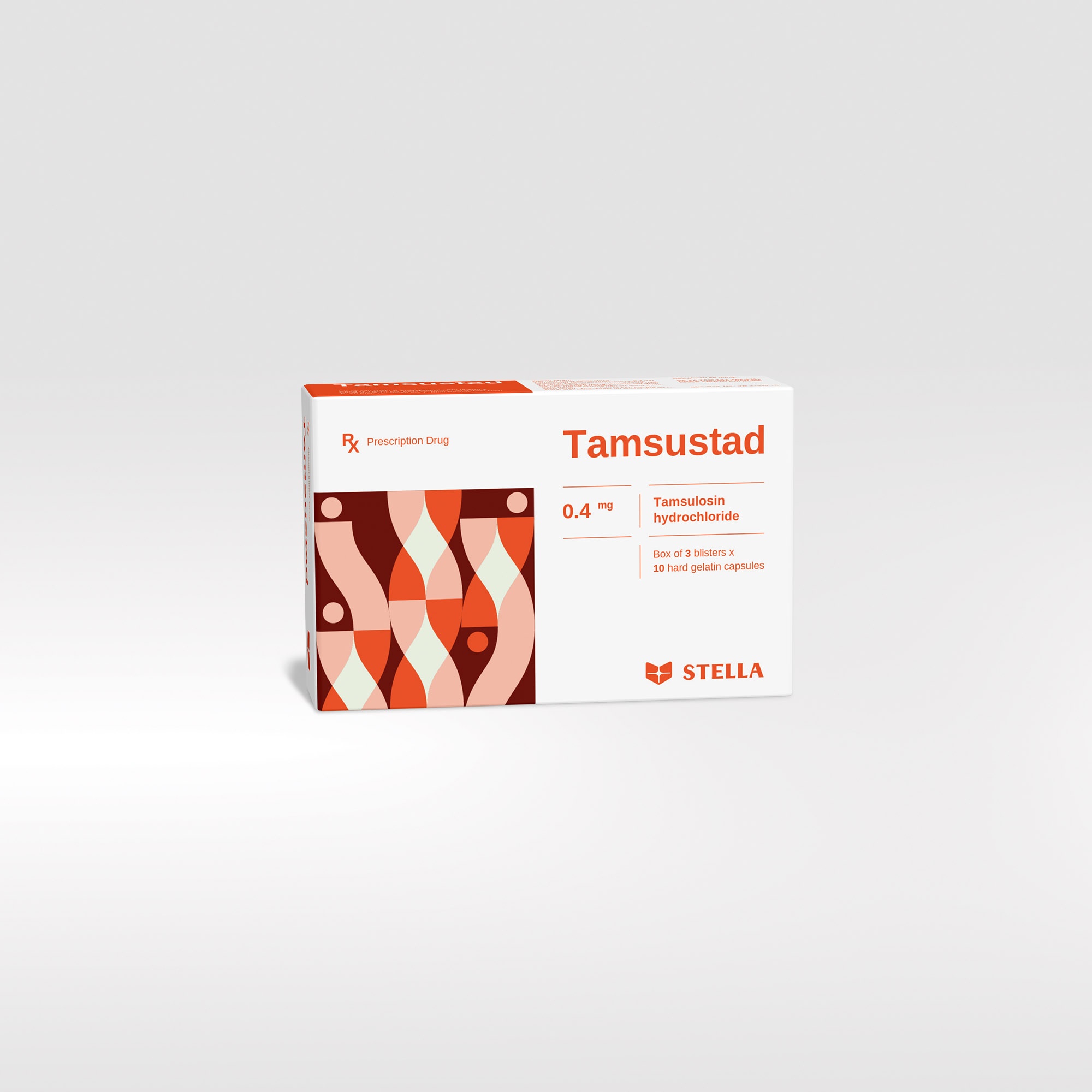Tamsustad Rx
Tamsulosin hydrochloride is a sulfamoylphenethylamine derivative, an alpha 1-adrenoceptor blocking agent, exhibits selectivity for alpha 1-receptors in the human prostate, resulting in an improvement in urine flow rate and a reduction in syndrome of benign prostatic hyperplasia (BPH).
| Pack size | Box of 30 capsules. Bottle of 100 capsules. |
| Shelf-life | 36 months |
| Composition | Tamsulosin hydrochloride (as tamsulosin hydrochloride pellets 0.12%) |
| Dosage forms and strengths | Hard gelatin capsule: 0.4 mg |


